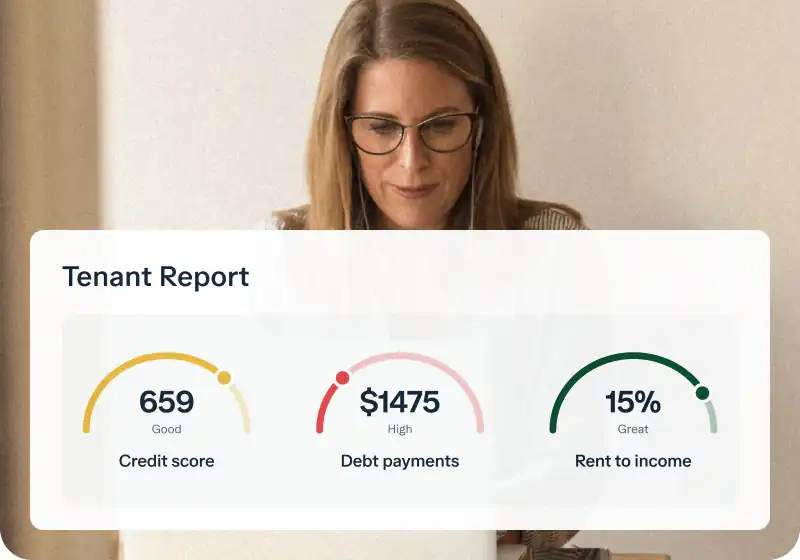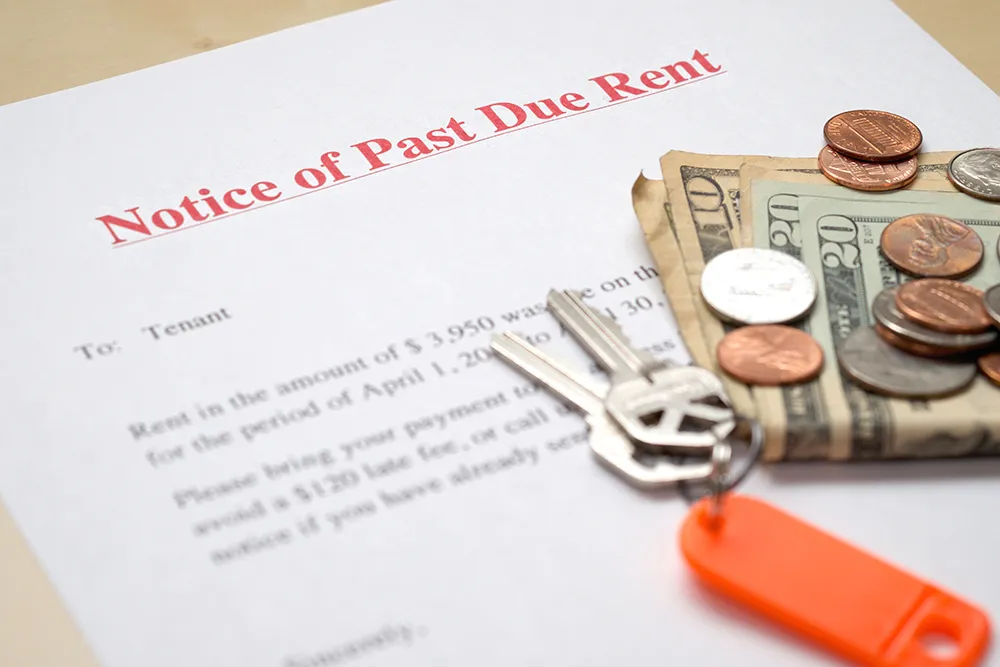Setting the right rental price for your investment property is crucial for profitability and minimizing vacancy. In a constantly shifting market, relying on guesswork is risky. Understanding and using rental comparables is essential for landlords and investors in 2025.
Key takeaways
- Rent comps are recent rental rates for similar properties in the same area.
- Accurate rent comps help prevent overpricing (leading to vacancy) or underpricing (losing potential income).
- Market trends in 2025, including shifting supply, demand, and interest rates, make comps especially important.
- Analyzing comps involves filtering for relevant properties and adjusting for specific features.
- Rental prices should be continuously monitored and adjusted based on current comps and market conditions.
What are rent comps?
Rental comparables, or rent comps, are the ongoing rates for properties similar to yours in a specific geographic area.
They represent what tenants are currently paying for comparable rental units. Analyzing these figures helps landlords determine a competitive and fair market rent for their own property.
This process involves looking at recent leases for properties with similar characteristics. Factors like location, size, property type, and amenities all play a role in identifying relevant comparables.
Why finding accurate rent comps is crucial in 2025
The rental market in 2025 is filled with challenges and opportunities that emphasize the need for precise pricing. Recent data points indicate these shifts that directly impact rental values.
In March, the median rent in the United States’ 50 largest metropolitan areas was $1,694, a slight year-over-year decline of $20 for 0-2 bedroom properties, according to the Monthly Rental Data Report by Realtor.
Despite this dip, the median rent remains comparatively higher than pre-pandemic levels. These datapoints point towards a complex rental market where overall levels are higher, but recent trends show moderation in some segments.
Landlords are also facing increased operational costs. In 2024, 85% of landlords raised rent prices to offset these costs, with nearly a third increasing rents by 6-10%. Rising interest rates, averaging 6.63% for a 30-year fixed mortgage in March 2025, also impact landlord expenses and pricing decisions. Accurate rent comps are crucial for navigating these dynamics, helping landlords set competitive and realistic rates that minimize vacancy without undervaluing their investment.
How to find rental comparables: 3 proven methods
Here are three key techniques to use to find the most accurate rent for your property in 2025.
Method 1: Use online rental platforms & tools
Various online platforms provide tools and data for finding rental comparables. These tools typically allow you to enter your property address and get a suggested rent range.
Some platforms specialize in providing rent estimates and detailed comparable reports. These tools leverage large datasets, including past and present listings. While easy to use, the accuracy can vary depending on the tool's data sources and algorithms. They are a good starting point for getting a quick estimate and identifying potential comparables.
Method 2: Consult local real estate agents or property managers
Local real estate agents or property managers often have access to data not publicly available. This includes information from the Multiple Listing Service (MLS), which records rental transactions in many areas. They also possess invaluable local market knowledge.
An experienced local professional can provide insights into specific neighborhood trends and recent lease agreements. Building relationships with local experts can offer access to more detailed and accurate comparable data. This method might involve a fee or be part of property management services.
Method 3: Do manual research
Performing manual research involves actively searching for rental listings in your target area. This includes browsing rental platforms, checking local classified websites, and even driving around the neighborhood. Pay attention to "For Rent" signs and listed rental rates.
While time-consuming, manual research allows you to see the properties firsthand (if possible) and assess their condition and amenities. You can compare your property's features directly against active listings. This method requires careful observation and note-taking.
A detailed comparison: Rental comps methods
- Online tools are easy and offer broad geographic coverage, but their data detail and accuracy depend heavily on their algorithms and available listings.
- Local agents provide high accuracy based on their specific market expertise and access to private data like MLS, but coverage is limited to their area.
- Manual research is time-consuming but allows for high customization and direct observation of publicly listed properties.
How to analyze rent comps and filter for true comparables
Once you have a running list of tools or ideas for comparing rent, move on to analyzing the best options. We have enlisted some key factors you should look for to shortlist the best options.
Filter by core characteristics
- Property's location: The property's location is often the most important factor. Comparables should be within the same neighborhood or very nearby areas with similar characteristics. Market conditions and demand can shift dramatically, even just a few blocks away.
- Property type: The type of property matters greatly. Apartments, single-family homes, and condos all command different rental rates, even with similar features. Always compare apples to apples when it comes to property type.
- Property’s size and layout: Size—especially the number of bedrooms and bathrooms—is a primary driver of rent. Square footage can matter, but bed/bath count is usually the first filter. Look for properties that match your unit’s layout.
Adjust for condition and amenities
- Amenities: Parking, in-unit laundry, air conditioning, shared facilities like a gym or pool, and included utilities all make a difference. Even small variations require adjustments when comparing.
- Condition and age: Renovated units with modern finishes generally rent for more than older units that need updates. Always assess the quality of the comparables.
- Market trends and timing: Local economic conditions, job growth, and supply/demand in your submarket provide crucial context. Timing matters too—rents often rise in peak moving seasons when demand is stronger
Focus on recent leases
Filter properties based on location and core characteristics. Look for properties within a very close radius, ideally the same sub-neighborhood. Ensure the comparable has the same number of bedrooms and bathrooms as your property.
Exclude properties that are significantly different in age, condition, or property type unless absolutely necessary due to limited data. The goal is to find units that a prospective tenant would genuinely consider as an alternative to yours. Focus on recently rented properties rather than old listings if possible, as they reflect the most current market conditions.
Setting your rental price
Follow these tips to evaluate the rent prices and set the one that makes the tenant happy and ensures positive cash flow in your pocket.
Establish a price range from the comps
Review your filtered and analyzed comparables to establish a price range. The range should reflect the high and low points of similar properties, adjusted for differences. Your initial asking price will likely fall within this range.
Consider current market conditions and your goals. If demand is high and inventory is low, you might lean towards the higher end of the range. If you need to rent the property quickly to avoid vacancy, pricing slightly lower might be strategic. Your comp analysis gives you the informed boundaries for this decision.
Make final adjustments for unique property factors
After you have a range from comps, make final adjustments based on the unique aspects of your property.
- Does your unit have a desirable view?
- Is it located closer to public transport or a popular park than the comps?
- Have you recently made significant upgrades, like a new kitchen or bathroom
Conversely, also check if there are any minor drawbacks compared to comps, like a slightly smaller size or lack of a specific appliance? Factor in the value these specific features add or subtract from the comparable prices. This fine-tuning ensures your price accurately reflects your property's unique offering.
Effectively managing the finances related to these property improvements, such as tracking renovation costs, is essential. Tools that help landlords track expenses by property can provide clarity on the return on investment for upgrades. Baselane offers bookkeeping features that help you categorize income and expenses by property and Schedule E category, making it easier to see the financial impact of property-specific factors on profitability.
Continuous monitoring and pricing strategy
Rent comparables require ongoing attention. The real estate market is always in flux, and what was a fair rent yesterday could be below average in just a few weeks. Therefore, it's essential to continuously monitor prices and adjust your rent accordingly.
Monitoring and updating your price
The real estate market is dynamic; prices can change based on seasonality, local economic shifts, or new inventory. Your rental price is not set in stone once you list the property. Continuously monitor the market and the comps you initially identified.
If you are not receiving inquiries or applications, your price might be too high relative to current market expectations. If you receive many offers immediately, your cost might be too low. Be prepared to adjust your price based on market feedback and updated comparable listings. Regularly revisiting rent comps helps you stay competitive and maximize potential rental income over time.
Considerations for different property types
- Traditional apartment units within a larger building: Focus on comps within that building or very similar buildings nearby. Look at units with the same bed/bath count and similar finishes. Pay attention to building-wide amenities like security, parking, and common areas, as these significantly influence rent.
- Single-family house rental: Broaden your search radius slightly within the same neighborhood. Consider factors like yard size, garage access, and school district quality, which are more relevant for houses than apartments. Comps should be other single-family homes that have recently been rented.
- Short-term rentals: Pricing is highly variable based on seasonality, day of the week, local events, and booking platform fees. Evaluate average daily rates and occupancy rates of similar properties listed on platforms like Airbnb or VRBO in your immediate area.
Understanding rental market trends in your area
Contextualize the comps you find within the broader market trends for your specific area. Are rents generally rising or falling in your neighborhood? Is there a surplus of similar properties on the market, or is demand high? Consider the recent trend data discussed earlier, but apply it to your local context.
For example, while national median rents saw a slight year-over-year decline in March 2025 for some property types, your specific submarket might be experiencing strong growth due to local factors. Pay attention to insights from local agents or property managers who have a pulse on the ground. Incorporating this trend data helps you determine if you should price at the high or low end of your comparable range.
Bottom line
Accurate rental pricing is key to maximizing returns in 2025. Staying competitive means going beyond guesswork—using reliable rent comparables and tracking financial performance to set rates that balance profitability with occupancy.
Baselane makes this easier. Our all-in-one platform combines banking, rent collection, and bookkeeping so you can track income, expenses, and cash flow in one place. With automation, property-specific accounts, and built-in financial tools, Baselane helps you make data-driven pricing decisions that minimize vacancies and boost rental income.
FAQs
What is a good radius for finding rent comps?
Ideally, look for comparable properties within a half-mile radius of your property. In dense urban areas, this radius might be smaller, while in suburban or rural areas, you might need to extend it slightly.
How often should I update my rent comps?
It's wise to review and update your rent comps annually at minimum, and ideally every time a unit is nearing lease renewal or becomes vacant. Monitoring key market trends quarterly is also recommended.
Can I use properties for sale as rent comps?
Properties for sale are not reliable rent comps. They represent market value for ownership, which is determined by different factors than rental value. Focus strictly on properties that have recently been rented.
Are free online rent estimates accurate?
Free online estimates are a good starting point but should not be the only data source. Their accuracy depends on the quality and recency of the data they use and may not account for unique property features. Supplement them with other research methods.
What if there are no exact comparable properties nearby?
If exact matches are scarce, widen your search radius slightly or include properties with minor differences in bed/bath count, making adjustments accordingly. You can also look at properties in adjacent, similar neighborhoods.
















.jpg)
